No products in the cart.
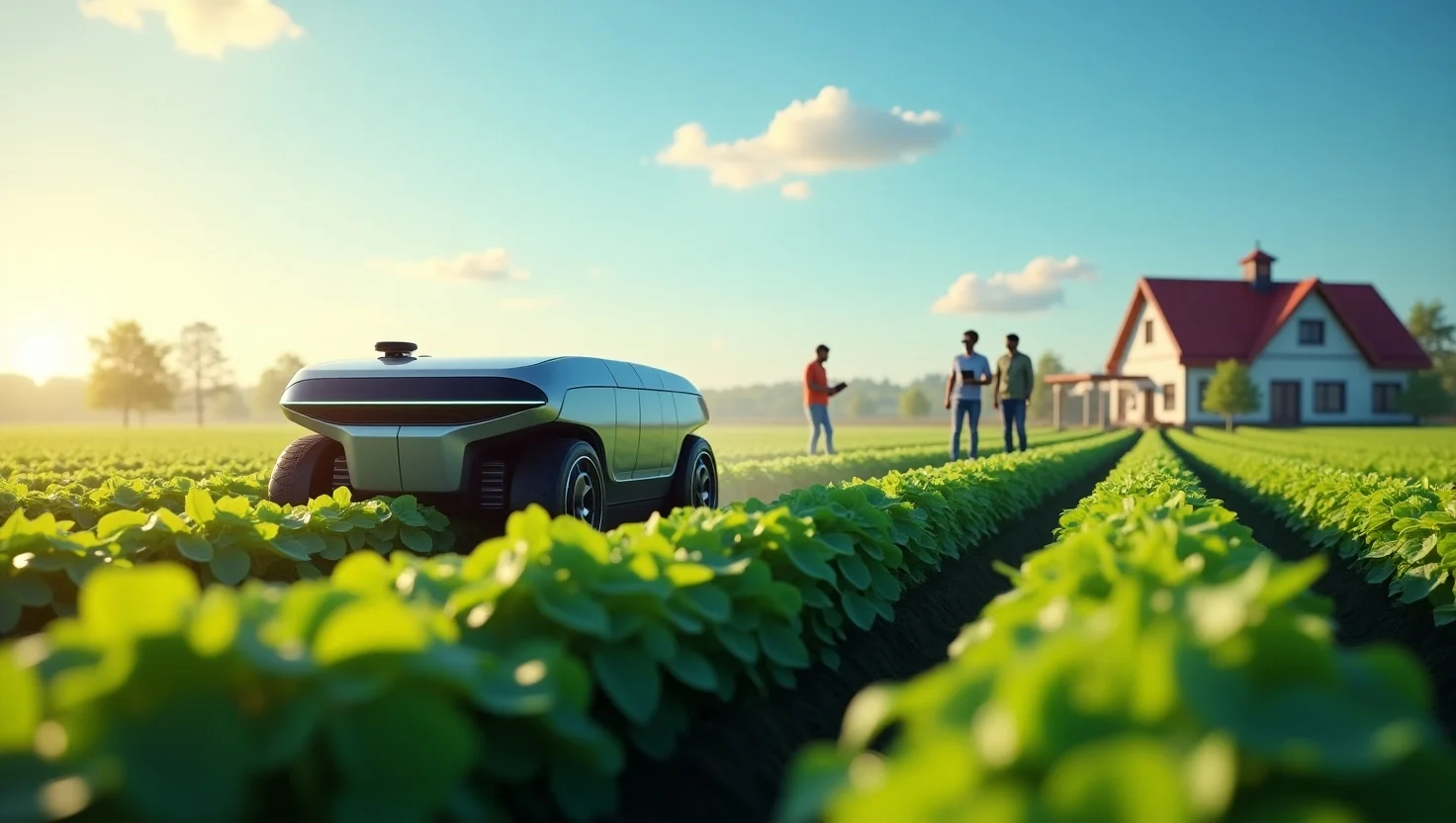
1. Introduction:
Farming in the United States is undergoing a seismic shift, and artificial intelligence (AI) is at the heart of it. From droughts and labor shortages to unpredictable market conditions, U.S. farmers are battling numerous challenges daily. As these issues intensify, AI in United States farming is no longer a futuristic concept, it’s fast becoming a practical solution on the ground.
Whether it’s a small family farm in Iowa or a large commercial operation in California, AI-driven tools are helping optimize resources, cut operational costs, and make smarter, data-backed decisions. Smart farming technologies, such as AI-powered drones, predictive weather models, and automated irrigation systems, are allowing growers to monitor soil health, detect pests early, and predict yields with remarkable accuracy. In fact, what once took hours of manual effort can now be done in minutes, thanks to intelligent algorithms and machine learning models.
Despite these impressive advances, the adoption rate of AI in US farming still faces barriers. Many small-scale farmers lack access to affordable AI tools. Additionally, ethical concerns around data privacy, job displacement, and environmental impact continue to spark debate within the agricultural community.
This article explores the wide-ranging benefits, cutting-edge breakthroughs, and promising future trends of AI in American agriculture. We’ll highlight both opportunities and challenges, offering a realistic look at what’s next for this technology in one of the world’s most vital industries. As we dive deeper, you’ll discover why understanding and implementing AI isn’t just an option for farmers, it’s a strategic necessity for ensuring resilience, sustainability, and profitability in the years to come.
2. The Core Benefits of AI in U.S. Agriculture
Artificial intelligence is redefining how U.S. farmers approach crop production, resource management, and operational efficiency. Among the most significant benefits is the ability to gather and analyze massive amounts of data quickly, transforming traditional agriculture into smart farming.
Through AI crop monitoring, farmers can now assess plant health, detect diseases early, and optimize harvesting schedules. Drones and sensors capture real-time images of fields, while machine learning models identify stress patterns or nutrient deficiencies that would otherwise go unnoticed. This not only reduces crop loss but ensures higher-quality yields with fewer inputs.
Precision agriculture is another game-changer. AI systems adjust irrigation, fertilization, and pesticide use based on hyper-localized data. Instead of treating an entire field the same, AI enables zone-specific interventions, saving water, reducing chemical runoff, and improving soil health. In a time when sustainable agriculture is no longer optional, these tools offer practical, eco-friendly solutions.
Then there’s agricultural automation, where AI-powered robots and self-driving machinery are replacing repetitive, labor-intensive tasks. From planting seeds to weeding and harvesting, these systems increase productivity while mitigating the challenges of labor shortages, a growing concern across the U.S.
AI in US farming also supports predictive analytics. By analyzing historical and real-time data, farmers can make more informed decisions about crop rotation, pest control, and even market timing. This helps reduce risks and maximize profitability in an increasingly volatile climate.
Together, these benefits illustrate why adopting AI isn’t just about staying current, it’s about future-proofing agriculture. As more farmers embrace these innovations, the industry moves closer to a resilient, efficient, and sustainable future.
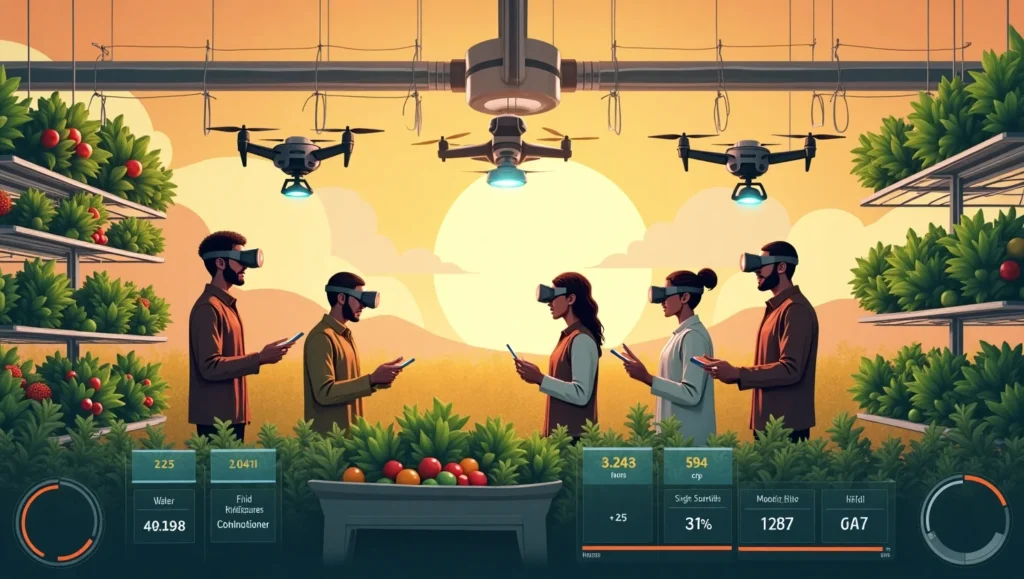
3. Recent Breakthroughs Shaping the Industry
Over the past few years, AI in precision agriculture has advanced far beyond pilot programs and research labs, it’s now reshaping day-to-day farm operations across the U.S. The latest agtech innovations are combining AI, robotics, and data science to unlock levels of efficiency and productivity once thought impossible.
One of the most significant developments is the rise of drone farming. These aerial devices, powered by AI and computer vision, provide high-resolution imagery of crops, enabling farmers to detect pests, monitor plant health, and even predict yields before harvest. When paired with machine learning models, drones offer actionable insights that reduce guesswork and improve response times.
Another game-changing advancement is autonomous farming equipment. Companies like John Deere have developed self-driving tractors that use AI to plant, fertilize, and harvest with minimal human intervention. These machines not only reduce labor costs but also operate with precision, minimizing waste and optimizing field coverage.
AI is also transforming weather prediction and resource management. Machine learning in agriculture allows farmers to anticipate rainfall, droughts, and temperature shifts more accurately than ever. This data enables better decision-making, helping to prevent crop failure and improve overall planning.
Beyond the fields, AI tools are being used to streamline logistics, from real-time tracking of produce to optimizing supply chain routes. These innovations reduce food waste and help farmers respond more efficiently to market demand, which is essential for staying competitive.
As these breakthroughs become more accessible, they’re driving a new era of farming where technology and tradition coexist. Embracing these tools isn’t just a choice, it’s becoming a necessity for farms that want to thrive in an increasingly data-driven agricultural landscape.
4. Challenges and Ethical Considerations
While the benefits of AI in farming are substantial, it’s important to address the AI limitations in farming and the ethical questions they raise. As with any disruptive technology, AI in agriculture comes with a set of risks and unintended consequences that cannot be ignored.
One of the most pressing issues is data privacy in agriculture. Smart farming relies heavily on collecting large volumes of data from soil sensors, drones, and farm management software. But who owns this data? Many farmers express concern that corporations or tech providers may have more control over their field data than they do. This raises questions about transparency, consent, and long-term dependency on third-party platforms.
Another major concern is AI and job loss. As autonomous farming equipment and robotic systems become more common, some fear that rural communities will suffer from reduced employment opportunities. While automation can address labor shortages, it also risks displacing workers who have depended on agriculture for generations.
There are also ethical concerns in agtech related to algorithmic bias and decision-making. For example, if an AI system recommends actions based on flawed data, it could harm crop health or even lead to financial loss. The reliability of these systems is still evolving, and without proper oversight, the risks of AI in farming could outweigh the benefits for some.
Lastly, affordability remains a barrier. High costs prevent many small and mid-sized farms from adopting advanced AI tools, potentially widening the gap between tech-rich industrial farms and those struggling to modernize.
As the industry continues to evolve, addressing these ethical, financial, and operational concerns will be key to building a fair and sustainable future for AI-powered agriculture.

5. The Future Outlook of AI in United States Farming
As we look ahead, the future of AI in agriculture is full of promise and rapid transformation. AI is set to move beyond current efficiencies into more predictive, autonomous, and interconnected systems that could fundamentally redefine how food is grown in the U.S.
One of the key drivers of this future will be next-gen farming technology, including edge computing, AI-integrated robotics, and Internet of Things (IoT) devices. These technologies will create farms that are not just smart but self-regulating, where decisions are made in real time with minimal human input, based on continuous feedback loops from machines, weather systems, and market data.
As AI adoption in agriculture increases, we can expect broader integration of satellite imaging, blockchain for supply chain transparency, and even AI-based crop genetics tailored to specific regions and climates. This could lead to more climate-resilient crops and further reduce the use of water, fertilizers, and pesticides, contributing to a healthier planet.
Another trend is the democratization of agricultural innovation. As tech becomes more affordable, smaller farms will begin leveraging AI through mobile-based platforms, subscription services, and cooperative models. Public and private partnerships will also play a key role in supporting equitable AI access across rural America.
However, to unlock the full potential of these AI farming trends, there must be strong policies around data ownership, ethical AI use, and farmer education. Technology alone isn’t the answer, empowering farmers to use it effectively is equally critical.
The future isn’t just about more tech, it’s about smarter, more inclusive agriculture that balances innovation with responsibility. If embraced thoughtfully, AI could become the cornerstone of a more resilient, sustainable, and food-secure United States.
6. Conclusion: Embracing the AI Revolution in U.S. Farming
The rise of AI in US farming marks a pivotal moment in the evolution of American agriculture. From smarter crop monitoring and autonomous machinery to predictive analytics and real-time decision-making, the tools now available are more advanced and accessible than ever. This transformation isn’t just about technology, it’s about resilience, sustainability, and the future of our food systems.
AI-driven agriculture is enabling farmers to make better, faster decisions. It’s allowing them to grow more with less, less water, fewer chemicals, and lower costs. At the same time, it’s opening doors to new business models, improving transparency in the food supply chain, and addressing critical challenges like climate change and labor shortages.
But to fully realize these benefits, widespread education and support are essential. Farmers must be empowered to adopt smart farming tools confidently, with clear understanding of both their potential and limitations. Industry leaders, policymakers, and agtech innovators all have a role to play in ensuring these technologies serve not just large enterprises, but small and mid-sized farms as well.
The future of farming technology is not a distant dream, it’s already unfolding across fields in Iowa, California, and everywhere in between. By investing in infrastructure, prioritizing ethical data practices, and fostering inclusive innovation, the U.S. has an opportunity to lead the world in sustainable, tech-powered agriculture.
Now is the time to act. Whether you’re a grower, an investor, or simply passionate about the future of food, staying informed and engaged is key. Embrace the shift, ask questions, and support efforts that make AI in farming more transparent, equitable, and impactful.
Join the conversation, support smart agriculture, and be part of the future of farming.
FAQs:
Q1. What is AI in agriculture?
Artificial Intelligence (AI) in agriculture refers to the integration of machine learning, computer vision, and data analytics into farming practices. This technology enables precision agriculture, where farmers can monitor crop health, optimize resource use, and predict yields more accurately. AI applications include automated irrigation systems, pest detection, and autonomous farming equipment, leading to increased efficiency and sustainability in farming operations.
Q2. How is AI transforming U.S. farming?
AI is revolutionizing U.S. farming by enabling precision agriculture, improving crop monitoring, optimizing resource use, predicting yields more accurately, and automating various farm tasks. These advancements lead to increased efficiency and sustainability in farming practices.
Q3. What are the key applications of AI in agriculture?
Key AI applications in agriculture include:
– Precision farming: Utilizing AI to manage field variability in crops.
– Crop health monitoring: Using AI to detect diseases and pests.
– Automated irrigation systems: AI-driven systems that optimize water usage.
– Pest and disease detection: AI tools that identify and manage threats.
– Yield prediction: AI models that forecast crop yields.
– Autonomous farming equipment: Self-operating machinery that performs tasks like planting and harvesting.
These applications enhance productivity and sustainability in farming.
Q4. What are the benefits of AI in U.S. agriculture?
The benefits of AI in U.S. agriculture include:
– Increased efficiency: Automation of tasks reduces labor and time.
– Resource optimization: AI helps in the efficient use of water, fertilizers, and pesticides.
– Improved crop yields: Predictive analytics lead to better planning and management.
– Sustainability: AI promotes practices that are environmentally friendly.
These advantages contribute to more sustainable and profitable farming practices.
Q5. What are the challenges of implementing AI in farming?
Challenges include:
– High costs: Initial investment in AI technology can be substantial.
– Data privacy concerns: Managing and securing farm data is critical.
– Integration issues: Incorporating AI into existing farming practices can be complex.
– Digital literacy: Farmers may require training to effectively use AI tools.
Addressing these challenges is essential for the successful adoption of AI in agriculture.
Related Articles
Crop Management
Can AI Predict Market Prices for Farmers? Here’s What You Need to Know
1. Introduction: Agricultural markets are notoriously unpredictable. One season, a bumper crop...
Crop Management
AI-Powered Crop Spraying Drones: Precision Agriculture in Action
1. Introduction: Farming has always been a race against time, pests, and...
Crop Management
Top AI Farming Startups in the U.S. to Watch in 2025
1. Introduction: Farming in the United States is undergoing a seismic shift,...
Crop Management
Top 5 Ways U.S. Farmers Are Using AI Drones to Boost Yields in 2025
1. Introduction: In 2025, the American agricultural landscape is undergoing a transformation...
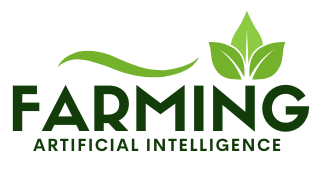
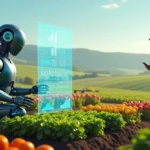
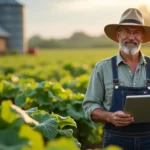
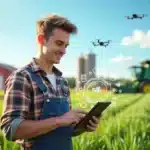

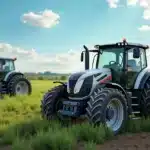

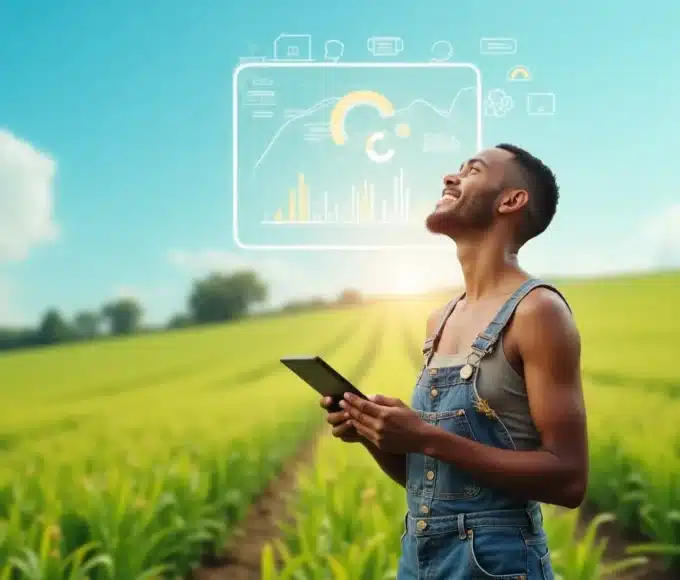
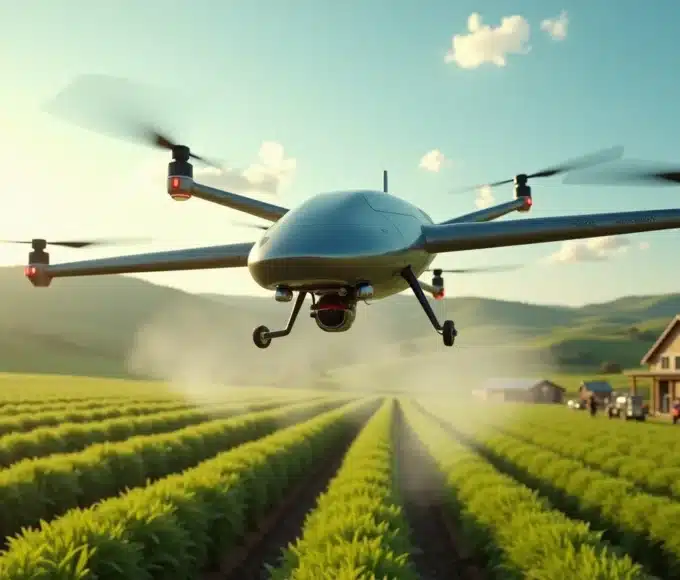
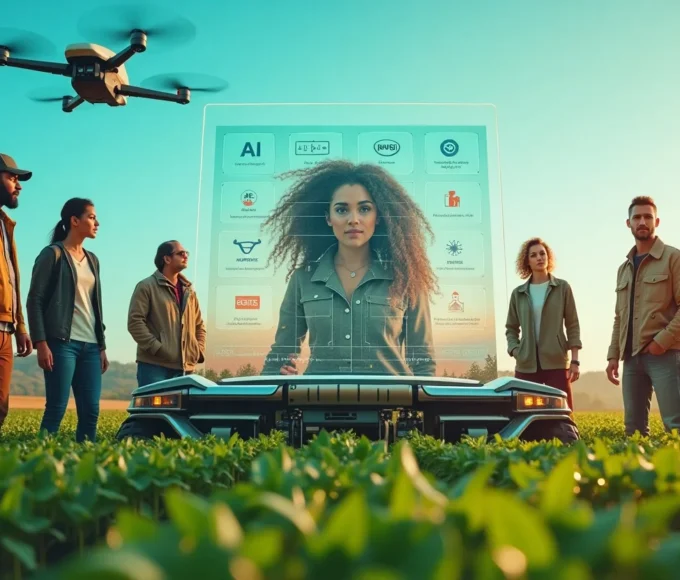
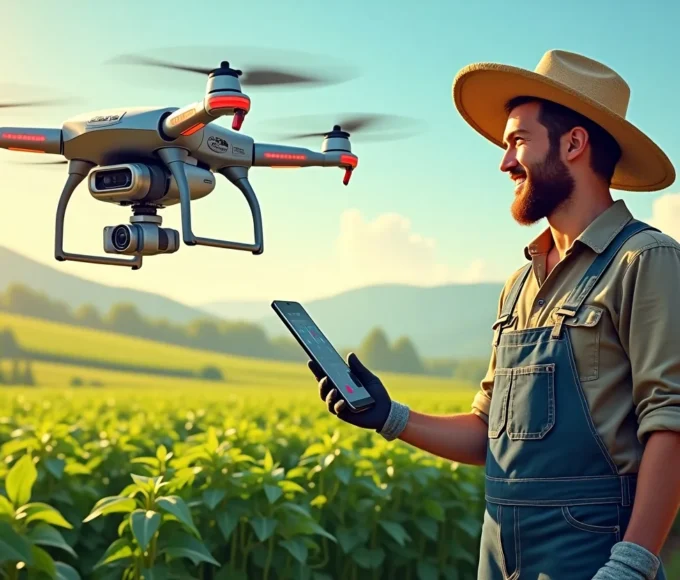
Leave a comment